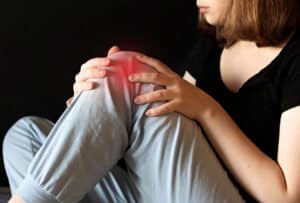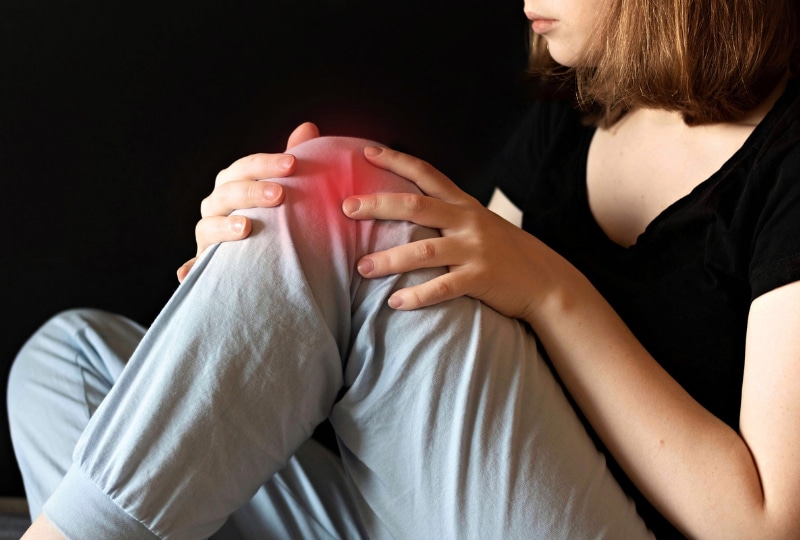
5 Common Reasons Behind Knee Pain
Do you often find yourself wincing in pain every time you take a step? Are your knees feeling stiff and achy, making it difficult to carry

Do you often find yourself wincing in pain every time you take a step? Are your knees feeling stiff and achy, making it difficult to carry out your daily activities? If so, you’re not alone. Knee pain is a common ailment that affects millions of people around the world. But what causes this discomfort? In this blog post, we’ll explore five of the most common reasons behind knee pain and provide some tips on how to alleviate it. So sit back, relax, and read on to discover why your knees might be hurting – and what you can do about it!
Source: ACSQHC
As we age, our bones and muscles weaken. This can lead to problems with our joints, including our knees. arthritis is a common age-related problem that can cause knee pain. osteoporosis, another age-related condition, can also cause knee pain. If you have either of these conditions, it’s important to see your doctor so you can get treatment and relief.
There are many different types of knee pain, but injury-related pain is one of the most common. There are a number of different ways that you can injure your knee, and each type of injury will cause its own unique type of pain.
One of the most common ways to injure your knee is through a fall. When you fall, you may twist your knee in an unnatural way, which can cause the ligaments or tendons to stretch or tear. This type of injury can be very painful, and it may take some time to heal properly.
Fractures and bony injuries are some of the most common reasons behind knee pain. The knee is a complex joint made up of bones, ligaments, tendons, and cartilage, all of which can be injured.
Fractures are usually the result of a direct blow to the knee or a fall onto the knee. The most common bone fractures involve the patella (kneecap), femur (thighbone), tibia (shinbone), or fibula (calf bone). These fractures can range from relatively minor cracks to complete breaks.
One of the most common ligament injuries is an anterior cruciate ligament (ACL) tear. The ACL is a strong band of tissue that connects the thighbone to the shinbone and helps keep the knee stable. A tear can occur when there is a sudden change in direction or a blow to the knee. Other ligament injuries include posterior cruciate ligament (PCL) tears and medial collateral ligament (MCL) tears.
Cartilage and meniscus injuries are common causes of knee pain. The cartilage is the smooth, white tissue that covers the ends of bones and protects them from rubbing against each other. The meniscus is a C-shaped piece of cartilage that sits between the thighbone and shinbone and helps to cushion the joint.
Injuries to the cartilage or meniscus can occur due to a sudden impact or force being applied to the joint, such as in a car accident or a fall. They can also occur gradually over time due to wear and tear from activities like running or playing sports.
There are many different treatment options available for knee pain, and the best course of action will depend on the underlying cause of the pain. Some common treatments include:
This is often the first line of treatment for minor knee pain. Resting the joint and applying ice can help to reduce inflammation and swelling.
Losing weight can take pressure off of the knees and help to reduce pain.
Strengthening the muscles around the knee can help to stabilize the joint and reduce pain. Low-impact activities such as swimming or biking are often recommended.
A physical therapist can develop a custom exercise program to help reduce knee pain. They may also use other modalities such as ultrasound or electrical stimulation to help relieve pain.
Over-the-counter medications such as ibuprofen or naproxen can be helpful in reducing inflammation and pain. Your doctor may also prescribe stronger medications if necessary.
Corticosteroid injections into the knee joint can help to reduce inflammation and pain. However, these should only be used sparingly as they can weaken the cartilage over time.
Knee pain is a common problem that can have several causes. Knowing the underlying cause of your knee pain can help you determine the best treatment, as well as how to prevent it in the future. While some causes may require medical attention and surgery, there are many cases where simple lifestyle changes or home remedies can provide relief from knee pain. Remember to always consult with your doctor when dealing with any kind of discomfort in order to ensure proper diagnosis and treatment for yourself.

Do you often find yourself wincing in pain every time you take a step? Are your knees feeling stiff and achy, making it difficult to carry
Call 323.939.9039 or click below to schedule an appointment.